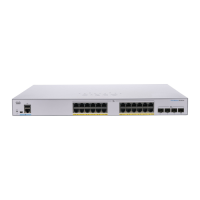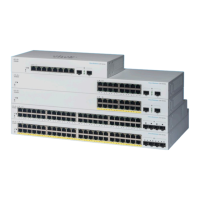If you are not using DHCP on your network, set the IP address type on the switch to Static and change the static
IP address and subnet mask to match your network topology. Failure to do so may result in multiple switches
using the same factory default IP address of 192.168.1.254.
Note
Console access also provides additional interfaces for debug access which are not available via the web interface. These
debug access interfaces are intended to be used by a Cisco Support Team personnel, in cases where it is required to debug
device’s behavior. These interfaces are password protected. The passwords are held by the Cisco support team. The device
supports the following debug access interfaces:
• U-BOOT access during boot sequence
• Linux Kernel access during boot sequence
• Run time debug modes - allows Cisco support team to view device settings and apply protocol and layer 1 debug
commands and settings. The run time debug mode is accessible over telnet and SSH terminals in addition to console.
Get to Know Your Switch
10
Get to Know Your Switch
Configuring Your Switch Using the Console Port
